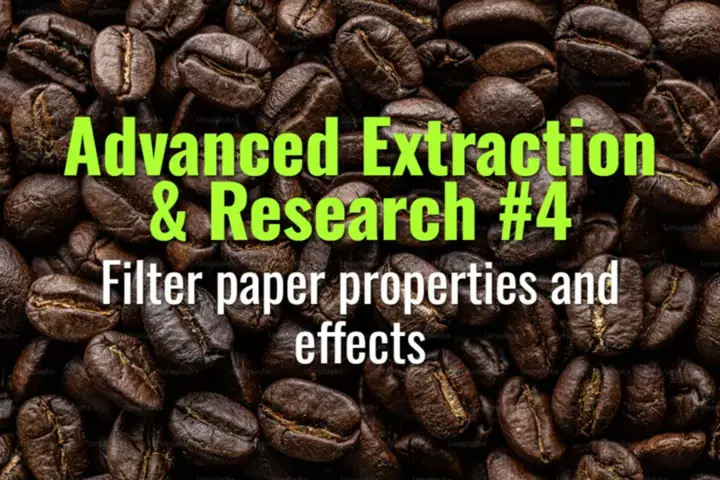Filter paper properties and effects
How filter paper properties—thickness, porosity, material, and treatments—affect flow, clarity, and flavor in brewed coffee.
- Coffee Basics Nerds
- 2 min read
Article 4 of 12 in Advanced Extraction & Research/

Key Properties of Filter Papers
- Thickness:
- Thicker papers slow flow, extending contact time.
- Thinner papers allow faster flow, lighter body.
- Porosity (pore size):
- Smaller pores filter more fines → cleaner cup, but slower flow.
- Larger pores pass more oils and particles → heavier body, more sediment.
- Material:
- Bleached (white): Neutral flavor, brighter cup.
- Unbleached (brown): May impart papery flavors if not rinsed.
- Specialty fibers (hemp, abaca) can enhance durability and flow stability.
- Surface Texture:
- Creped papers increase surface area, stabilizing flow.
- Smooth papers may cling to walls and stall drawdown.
Effects on Brewing
- Flow Rate: Paper thickness and porosity determine percolation speed.
- Flavor Clarity: Tighter filtration yields cleaner, tea-like cups.
- Body & Mouthfeel: Looser filtration allows oils and fines, giving richer body.
- Consistency: Papers with uniform pore distribution produce more predictable brews.
Research Insights
- Coffee oils carry aromatic compounds; papers with smaller pores trap them, leading to brighter but less full-bodied cups.
- Rinsing papers removes residual flavors and pre-wets fibers for even flow.
- Different brands vary significantly—even within the same brewer type (e.g., V60 vs Kalita).
Practical Barista Tips
- Always rinse paper filters before brewing.
- Choose filter paper to match recipe goals:
- Clean & bright: Thick, fine-pore papers.
- Rich & full-bodied: Thinner, coarser-pore papers.
- Experiment with brands and materials to fine-tune cup character.
Summary
Filter paper properties—thickness, porosity, material, and texture—have a profound impact on coffee extraction. They shape flow rate, clarity, and flavor profile, making filter choice a crucial variable in dialing in brewing methods.
You might also like:
- Tags:
- Flavor Profile
- Flow Rate
- Flavor Clarity
- Paper Filters
- Fine Tune
- Brewing Methods
- Lighter Body
- Coffee Oils
- Oils Fines
- Coffee Extraction
- Heavier Body
- Aromatic Compounds
- Clean Bright
- Surface Area
- Faster Flow
- Impact Coffee
- Slower Flow
- Flow Stability
- Filter Choice
- Cleaner Cup
- Clarity Flavor
- Slow Flow